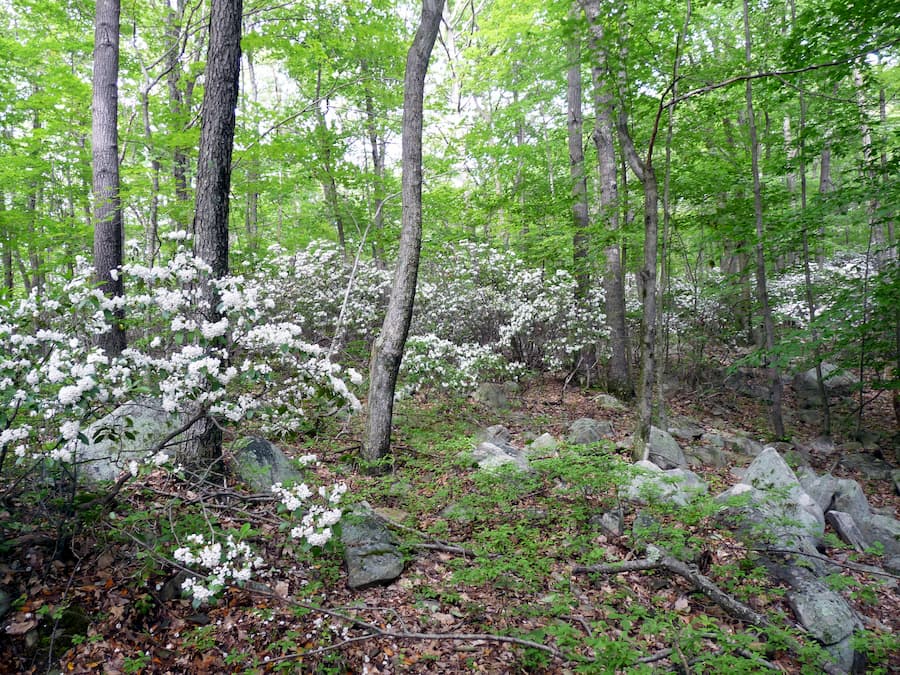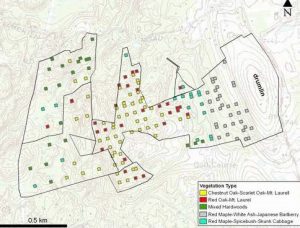Ecological research and monitoring are a hallmark of Highstead’s stewardship program. We pursue a range of monitoring projects to track changes in plant and animal populations over time in response to management treatments (e.g., herbicides, mowing, native seed mixes) and natural dynamics (e.g., windstorms, deer browsing, insect outbreaks, and climate).
Plants
In 2004, we established a grid of forest plots across Highstead’s woodlands to systematically observe changes in the forest over time. Every 5-10 years we resample the vegetation in these plots to track the growth and survival of trees and the abundance and diversity of shrubs and ground-layer vegetation (herbs). Read about the major vegetation changes that have occurred in Highstead’s forest.
Kalmia latifolia

One of the major changes in Highstead’s oak forest over the past several decades is a decline in the abundance and vigor of mountain laurel (Kalmia latifolia), the state flower of Connecticut. We studied the factors responsible for the decline in regeneration of this dominant shrub in 1) different landscape positions and 2) in areas both protected and exposed to deer browsing. Read about the study.
Phragmites removal
In 2012 we decided to remove the invasive reedgrass, Phragmites australis, from the perimeter of the Highstead pond in order to restore the pond’s viewshed and native wetland vegetation. We studied the efficacy of three different herbicide application treatments in eliminating Phragmites and the response of the native vegetation following herbicide treatments. Read more about the study.
Purple milkweed studies
Purple milkweed (Asclepias purpurascens) is a plant of special concern in Connecticut, and Highstead is home to the largest known population in New England. In surveying the population, we noticed that purple milkweed was naturally hybridizing with common milkweed (Asclepias syriaca). We initiated a study to better understand these natural hybrids and how they affect the vigor of the purple milkweed population.
Animals
Birds
Since 1997, local volunteers have monitored bird populations in Highstead’s meadows and since 2005 in Highstead’s woodlands. Bobolinks have declined recently in the meadows, and we are adapting our mowing regime to try to mitigate these declines.
Mammals
We use remote, motion-triggered cameras to monitor the occurrence of wildlife species in our forests and wetlands. Species detected include deer, coyote, red fox, fisher, bobcat, and beaver. Click here to view the images from our cameras.
Insects and pollinators
Since 2011, Redding preserve manager, John McLeran, has monitored dragonflies around the Highstead Pond, recording 32 species. Since 2020, Victor DeMasi and others have monitored the pollinator populations at Highstead. Read more about this study.
Plant-Animal Interactions
Deer and forests
Highstead studies the interaction of white-tailed deer and forest vegetation by maintaining two large deer exclosures – one built in 1998 in the Red Maple-White Ash Forest and the second built in 2007 in the Oak Forest. We use these exclosures to compare vegetation that is protected from deer browsing to vegetation that is exposed to deer to determine how browsing changes the diversity, structure, and composition of the forest. Read the results of this experiment.
